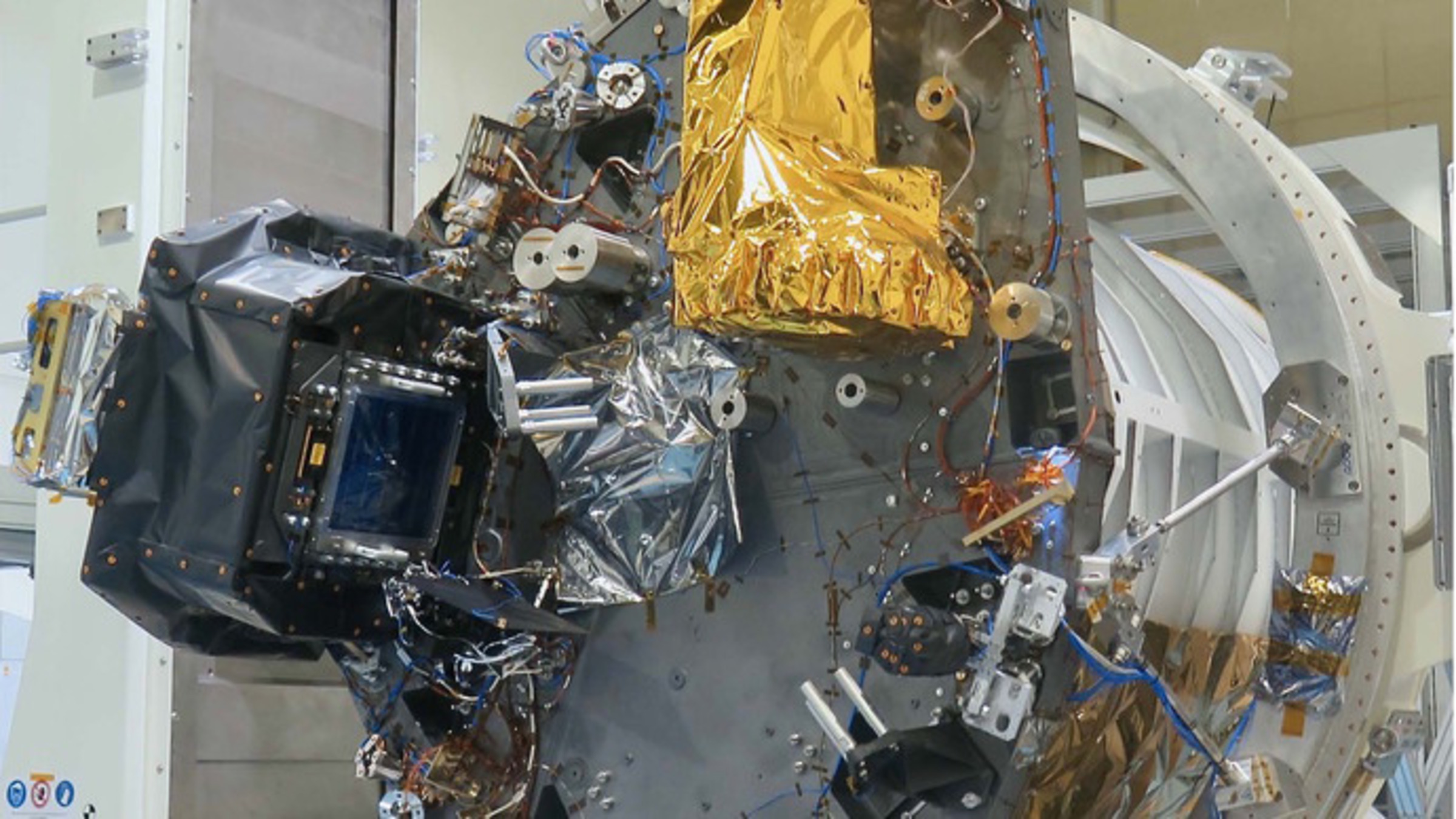

The Euclid mission has reached another milestone towards launch in 2022, to study the geometry and nature of the dark Universe. Its two instruments, the Visible instrument (VIS) and the Near Infrared Spectrometer and Photometer (NISP), are now built and fully tested. These have been delivered to Airbus Defense and Space in Toulouse, France, where they are now being integrated with the telescope to form the mission's payload module.
Euclid will consist of a 1.2m space telescope with the two instruments VIS and NISP. VIS is an optical camera for photometry. NISP is a near infrared camera that does double duty as a photometer and a spectrometer. VIS and NISP will run in parallel, recording data simultaneously from whatever portion of the sky the telescope is pointed at. Euclid will carry out a 15,000 square degree weak lensing survey, measuring the shapes of hundreds of millions of galaxies down to a magnitude of 24.5 over a wavelength range of 550-900nm, and obtain images of the same galaxies in three NIR filters to a magnitude of 24 (Y, J, and H). The NIR imaging of the galaxies will be combined with ground-based data to obtain precise and accurate photometric redshifts. Euclid will also carry out a galaxy redshift survey over 15,000 square degrees using slitless spectroscopy, measuring the redshifts of tens of millions of Hα emission line galaxies over the redshft range of ~0.9-1.8.
For more details, click here.